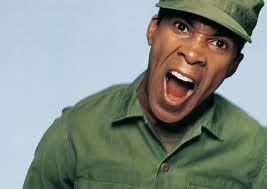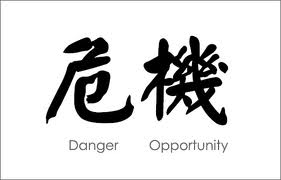 Labor Day has come and gone. I guess we can’t wear white again until the spring?!?! And Halloween merchandise is all over the place. This year — 2011 — will be over before any of us realize. Has your non-profit organization started its annual campaign planning process? If not, you better get moving and do so fast!
Labor Day has come and gone. I guess we can’t wear white again until the spring?!?! And Halloween merchandise is all over the place. This year — 2011 — will be over before any of us realize. Has your non-profit organization started its annual campaign planning process? If not, you better get moving and do so fast!
I love this time of the year!!! So, in honor of starting the 2012 annual campaign planning season, I am dedicating all of this week’s blog posts to the planning process. AND I’ve decided to put it all to music just to make it a little fun. Today’s post focuses on the volunteer identification and recruitment part of the annual campaign planning process.
Cue the music . . . click here for your first musical selection about volunteers and then start reading. 🙂
Annual campaigns that rely on face-to-face solicitation (compared to direct mail and ePhilanthropy) need volunteers to make this campaign vehicle go anywhere. Staff cannot go out and solicit by themselves because: 1) there are only so many hours in a day and 2) volunteers have far more credibility because they aren’t seen as “fundraising their salary” like paid-staff can sometime be perceived as doing. (Note: I didn’t say staff cannot solicit because I believe their butts need to be firmly planted in the chair next to a volunteer during most solicitation meetings)
So, let’s begin with volunteer recruitment as we start down the planning road. First, identify and recruit campaign leadership (these are the people who will help you with campaign planning), then recruit all the other volunteers (aka volunteer solicitors) later on (e.g. December and January). Here are a few quick tips to keep in mind as you start:
- Start off by writing job descriptions for each of your volunteer opportunities.
- Use the written job descriptions to build a prospect list for each position you need to fill. This will help you better understand what types of skill sets you’re looking for in certain individuals. You will find great prospects among your board of directors, volunteers, and donors. You don’t just want warm bodies.
- Use the written job descriptions to recruit volunteers. This will help you better communicate to prospects what you need them to do. It helps set expectations upfront and avoid misunderstanding. If you get a ‘NO’, celebrate the answer (in private) because they couldn’t help you and you just avoided lots of heartache and pain. Did I mention that you don’t just want warm bodies.
- Get organized and on the same page once you get everyone recruited. Have a short orientation meeting. Explain to everyone where they’re going. Take the opportunity to have everyone pull out their calendars and coordinate meeting dates/times that fit into everyone’s schedule. Urge them to INK those commitments.
- Keep in mind that volunteers are NOT meant to just be a rubber stamp. Please be genuine and engage volunteers in making key campaign decisions as you head down the planning road. No one has time to waste by sitting in meetings to just “validate” a written plan that staff has already written.
- Keep in mind that volunteers will NOT do this work by themselves. Staff play a valuable role in supporting and guiding any volunteer planning group. So, come prepared to paint the picture by providing data, weigh-in with different suggestions, and be able to explain pros and cons of behind each decision.
Successfully recruiting your campaign leadership to participate in the planning process ensures “buy-in” and “engagement”. It also guarantees that staff will not find themselves on an island all by themselves in the middle of the campaign.
Recruiting the right people lays a perfect transformative foundation for any annual campaign. Jim Collins (author of “Good to Great“) talks about this in terms of getting “the right people on the bus”. However, since this week’s posts are all about putting the annual campaign planning process to music, I think it is fitting to end with the lyrics of Jefferson Airplane as they sing their hit song “Volunteers“.
Remember, there is very little time remaining before 2011 ends. Start recruiting campaign leadership TODAY, so you can embark on your planning process TOMORROW!
Here is to your health!
Erik Anderson Owner, The Healthy Non-Profit LLC eanderson847@gmail.com http://twitter.com/#!/eanderson847 http://www.facebook.com/eanderson847 http://www.linkedin.com/in/erikanderson847







